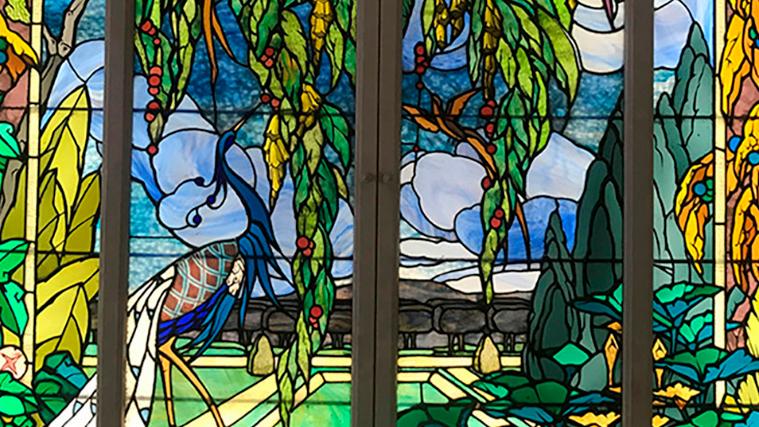In the 6th century, colored glass made an appearance in various church windows. This primitive technique became established in the 10th century with the advent of leaded stained glass which ensured a bright future.
Jacques Grüber (1870-1936), stained-glass window, c. 1920-1925, unsigned, eight sections mounted in wooden frames, made of American opalescent, iridescent chenille glass, faceted cabochons, painted glass, multi-layered polychrome glass and lead framework, 243 x 193.5 cm/95.7 x 75.2 in. Bayeux, November 11, 2020. Bayeux Enchères auction house. Mr. Camard
Result: €84,000
Thanks to the Treatise on Divers Arts by the Benedictine artist Theophilus, we know that contemporary leaded glass window techniques are not so different from those used in the 12th century. This laborious and demanding art soon put painters and stained glass artists in competition, but curiously, the former monopolized the latter's domain more often than the reverse. And yet six delicate steps were required to create a stained glass window: the glass was prepared; a design was sketched, with each piece numbered to facilitate cutting with a hot iron; the glass was assembled, painted and fired, and lastly it was framed in lead. Each stage had its own difficulties, depending on the material worked and the desired effect. Until the 19th century, colors were obtained by adding metal oxides to a local glass, often greenish, while experiments were carried out with the parison (a blob…
com.dsi.gazette.Article : 28170
This article is for subscribers only
You still have 85% left to read.
